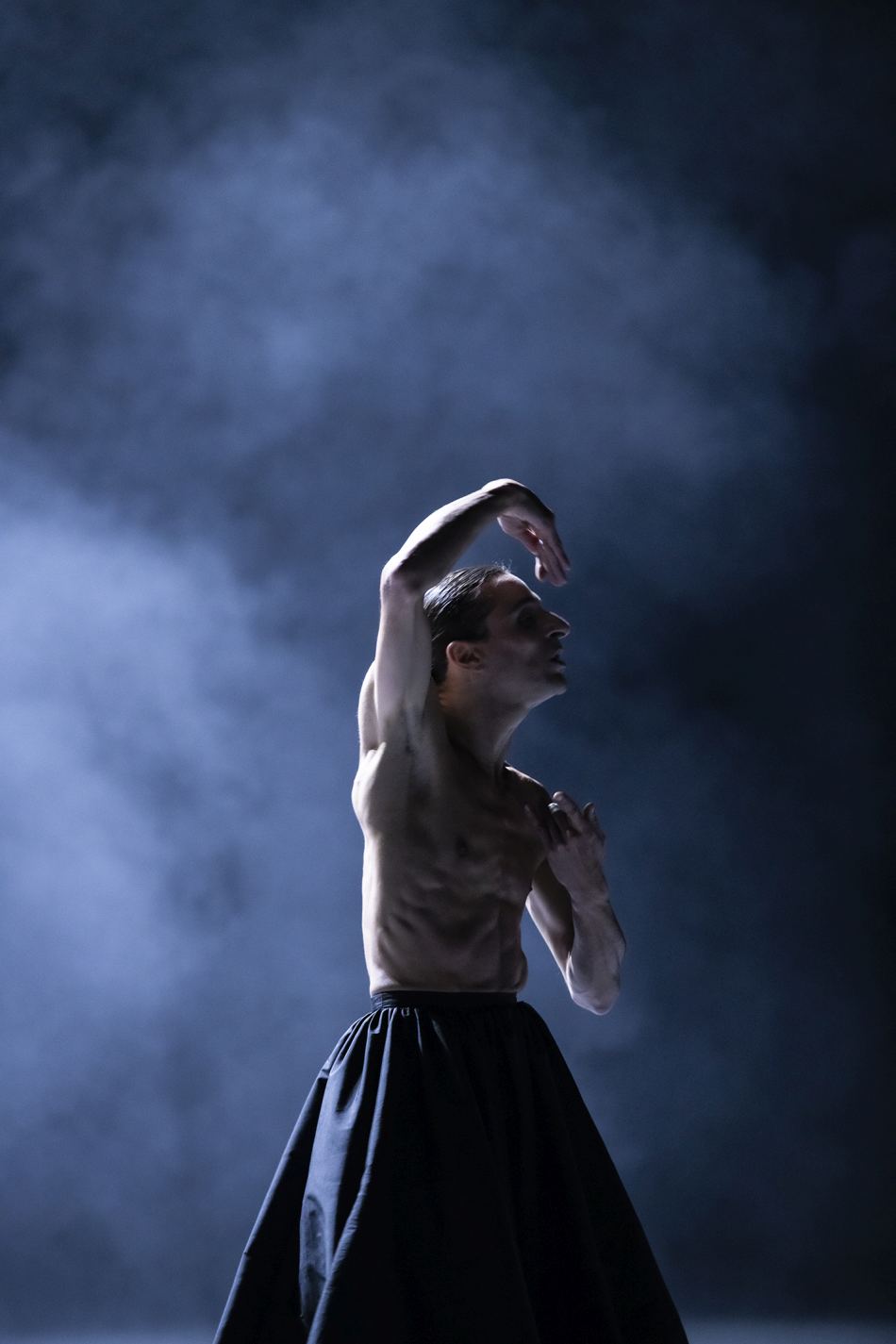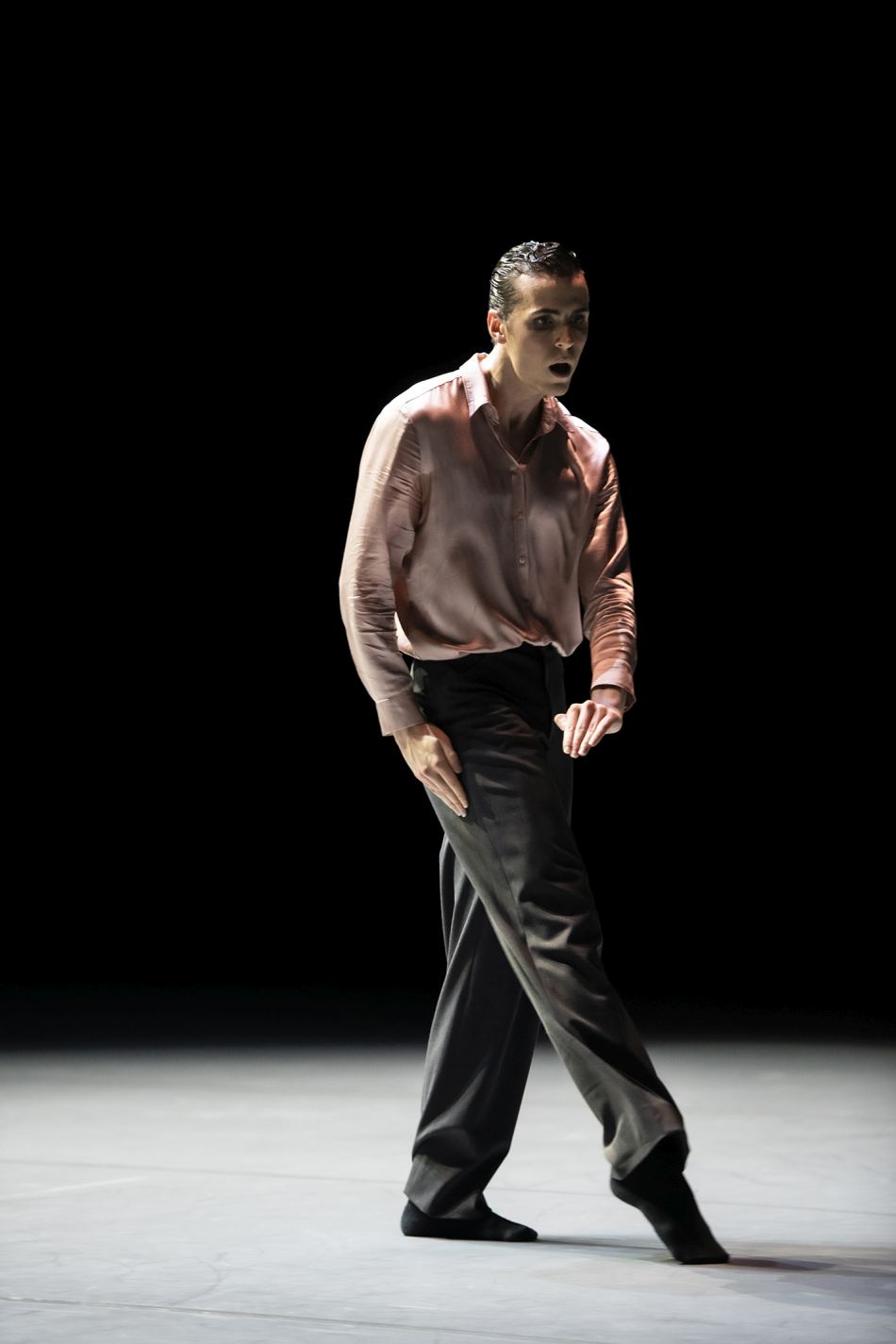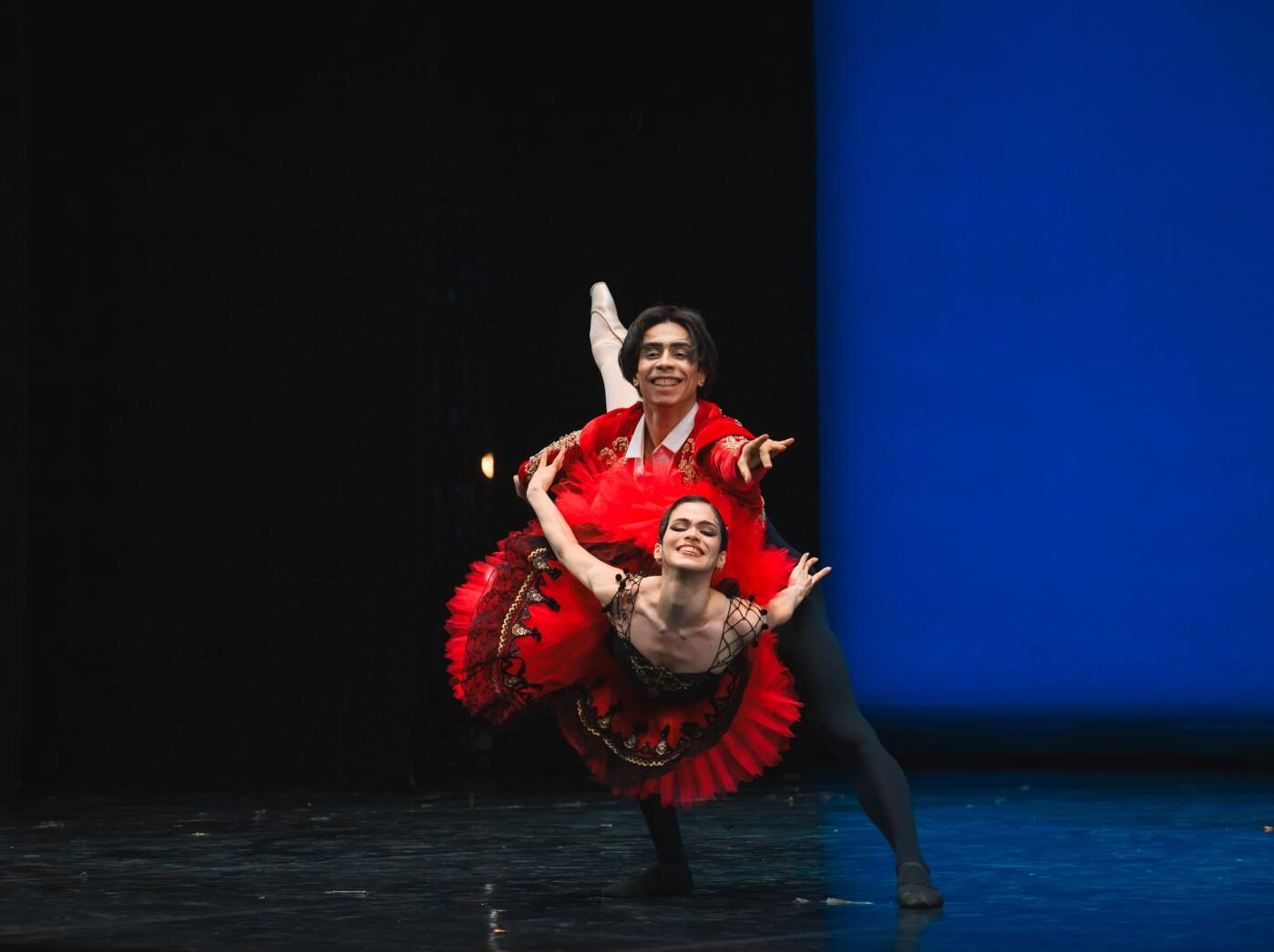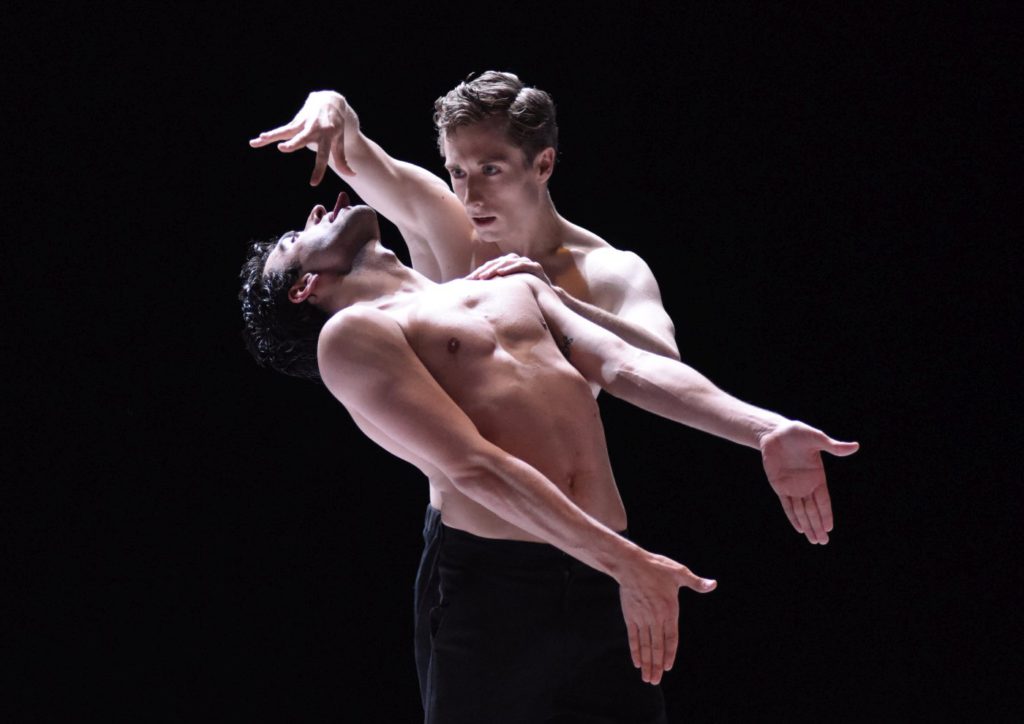Jittery
“A Wilde Story”
State Ballet Hanover
Opera House Hanover
Hanover, Germany
November 20, 2022
by Ilona Landgraf
Copyright © 2022 by Ilona Landgraf

 Marco Goecke recently added the German magazine tanz’s “Choreographer of 2021” award and the 2022 German Dance Prize to his collection. Last month, he presented a new ballet at the State Ballet Hanover, which he has helmed as artistic director since 2019. “A Wilde Story” plays with the life and work of Oscar Wilde. I was curious to see whether or not the story was, in fact, wild.
Marco Goecke recently added the German magazine tanz’s “Choreographer of 2021” award and the 2022 German Dance Prize to his collection. Last month, he presented a new ballet at the State Ballet Hanover, which he has helmed as artistic director since 2019. “A Wilde Story” plays with the life and work of Oscar Wilde. I was curious to see whether or not the story was, in fact, wild.
The evening opens not with Wilde, but with a bare-chested Michelangelo Chelucci, who jerks open and closes off his muscular torso, arms plowing through the air. His feet scurry zealously this way and that as he elegantly lifts his black, floor-length skirt. A glance at the program book reveals that Chelucci personifies the art of writing. Behind him, black-clad dancers hustle from one side of the stage to the other, comic figures in fast-forward, shaking their fists. Their steps stir up dust that gradually blurs our view of the grainy facade of a stately gray mansion (set and costumes by Marvin Ott). Though the pulsing rock of The Smashing Pumpkins’ “Tonight Tonight” suggests otherwise, we’re in Victorian England. “Believe in me,” they sing – but at whom does this line aim? (more…)

